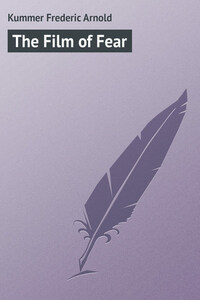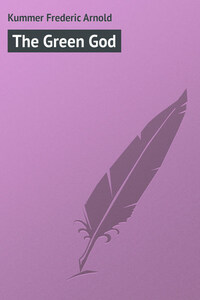Ruth Morton finished her cup of coffee, brushed a microscopic crumb from her embroidered silk kimono, pushed back her loosely arranged brown hair, and resumed the task of opening her mail.
It was in truth a task, and one that consumed an inordinate amount of her valuable time. And her time was extremely valuable. Computed upon the basis of her weekly salary of one thousand dollars, it figured out just $142.85 per day, or very nearly $6 per hour, or 10 cents per minute, for each minute and hour of the twenty-four. As a motion picture star, she had the satisfaction of knowing that she was paid a slightly larger salary than had been, until recently, received by the President of the United States.
The opening of the huge batch of letters that greeted her daily across her dainty breakfast table was very much of a duty. It was not that she felt any keen interest in the numberless notes from admirers, both male and female, from Portland, Me., to Los Angeles, Cal., to say nothing of South Bend, Opeloosa and Kicking Horse between. These might readily have been consigned to the depths of the wastebasket unopened, unread. But there was always the chance that, intermingled with this mass of adulation, there might be a real letter, from a real friend, or a business communication of importance from some picture company possibly, prepared to offer her two thousand dollars per week, instead of one thousand, at the expiration of her present contract. So the mail had to be carefully opened, at least, even if the bulk of it was tossed aside unread.
Her mother usually assisted her in this daily task, but to-day Mrs. Morton, oppressed by a slight attack of indigestion, slept late, and Ruth proceeded with the operation alone.
She was a singularly attractive girl, combining a wholesome and quite unassumed innocence with a certain measure of sophistication, gained by daily contact with the free and easy life of the studios. Her brown eyes were large and wondering, as though she still found it difficult to realize that within four years she had stepped from comparative poverty to the possession of an income which a duke or a prince might readily have envied. Her features, pleasing, regular, somewhat large, gave to her that particular type of beauty which lends itself best to the eccentricities of the camera. Her figure, graceful, well modeled, with the soft roundness of youth, enabled her to wear with becoming grace almost any costume, from the simple frock of the school girl to the costly gowns of the woman of fashion. Add to this a keen intelligence and a delightful vivacity of manner, and the reason for Ruth Morton's popularity among motion picture "fans" from coast to coast was at once apparent.
She sat in the handsomely appointed dining-room of the apartment on Fifty-seventh Street which she and her mother had occupied for the past two years. The room, paneled in dull ivory, provided a perfect setting for the girl's unusual beauty. In her kimono of Nile green and gold, she presented a figure of such compelling charm that Nora, her maid, as she removed the empty coffee-cup, sighed to herself, if not with envy, at least with regret, that the good God had not made her along lines that would insure an income of over fifty thousand dollars a year.
Ruth sliced open half a dozen more letters with her ivory paper knife and prepared to drop them into the waste basket. One was from a manufacturer of cold cream, soliciting a testimonial. Two others were from ungrammatical school girls, asking her how they should proceed, in order to become motion picture stars. Another was an advertisement of a new automobile. The fifth requested an autographed picture of herself. She swept the five over the edge of the table with a sigh of relief. How stupid of all these people, she thought, to take up their time, and her own, so uselessly.
The sixth letter, from its external appearance, might readily have been of no greater interest than the other five, and yet, something intangible about it caused her to pause for a moment before inserting the point of the knife beneath the flap of the envelope. It was a large envelope, square, formal-looking. The address upon it was typewritten. Unlike the majority of the other letters, forwarded from the studio, it bore the street and number of the apartment house in which she lived. The envelope was postmarked New York, and was sealed with a splotch of black sealing wax, which, however, contained the imprint of no monogram or seal, but was crossed both vertically and horizontally by a series of fine parallel lines, dividing its surface into minute squares.
Ruth observed these several peculiarities of the letter she was about to open, with growing interest. The usual run of her correspondence was so dull and uninteresting that anything out of the ordinary was apt to attract her attention. Slipping the ivory blade of the paper knife quickly beneath the flap of the envelope, she cut it open.
The letter within, written on the same heavy paper as that composing the envelope, contained but three typewritten lines. It was not these, however, that instantly attracted Ruth's attention, but the signature appended to them. This signature did not consist of a name, but of an astonishing seal, imprinted upon a bit of the same black sealing wax with which the envelope had been fastened. And the device, as Ruth bent over it to make out its clearcut but rather fine lines, filled her with a sudden and overwhelming dismay.











